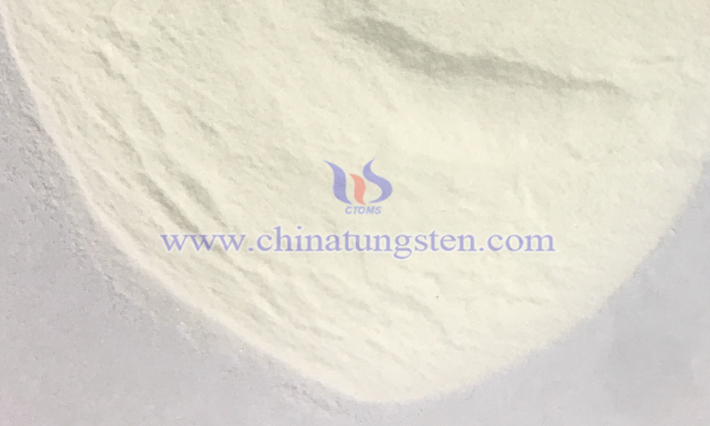What Is the Bulk Density of Ammonium Metatungstate?
- Details
- Category: Tungsten Information
- Published on Wednesday, 28 May 2025 15:56
- Written by Xiaoting
- Hits: 210
The bulk density of ammonium metatungstate (AMT) refers to the mass per unit volume of AMT powder in its naturally piled state, typically measured in g/cm³ or kg/m³. The term "natural piling" emphasizes that the powder is not compacted by external force but settles freely into a container under gravity, reflecting microstructural features such as porosity between particles, particle shape, particle size distribution, and surface roughness.

From a physical perspective, bulk density is a key indicator of the flowability and packing tightness of AMT powder. A lower bulk density suggests larger voids between particles and a looser packing, possibly due to uneven particle size distribution. Conversely, a higher bulk density indicates tighter packing, often associated with spherical particles or a uniform particle size distribution. This parameter significantly affects AMT's performance in storage, transportation, and processing stages such as pressing and sintering.
The bulk density of AMT can be measured using the funnel method. This requires a standard funnel (with an aperture selected based on powder particle size), a graduated cylinder, a balance, and a vibrating sieve. The process involves: first sieving the AMT sample, then securing the funnel on a stand with its bottom at a fixed distance from the cylinder opening, slowly pouring the dried sample into the funnel to allow the powder to fall freely into the cylinder forming a convex surface, gently scraping off excess powder with a ruler at the cylinder’s rim, and finally weighing the total mass of the cylinder and powder, subtracting the empty cylinder’s mass to calculate the bulk density. During the process, care should be taken to ensure a continuous and stable powder flow, and scraping should avoid compressing the powder to prevent skewing the results.

Factors influencing AMT’s bulk density include particle morphology, particle size distribution, and powder moisture content. Generally, spherical or near-spherical particles result in lower porosity and higher bulk density. Powders with a wide particle size distribution, where smaller particles fill gaps between larger ones, typically have a higher bulk density than those with a uniform size. Moisture increases adhesion between particles, leading to agglomeration and more voids during packing, thus lowering bulk density. Therefore, samples must be thoroughly dried before testing.
- Chinatungsten Online: ammonium-metatungstate.com
- CTIA GROUP LTD: en.ctia.group
- Tungsten News & Price: www.ctia.com.cn
- Molybdenum News & Price: news.molybdenum.com.cn
- Tel.: 86 592 5129696; Email: sales@chinatungsten.com





 sales@chinatungsten.com
sales@chinatungsten.com